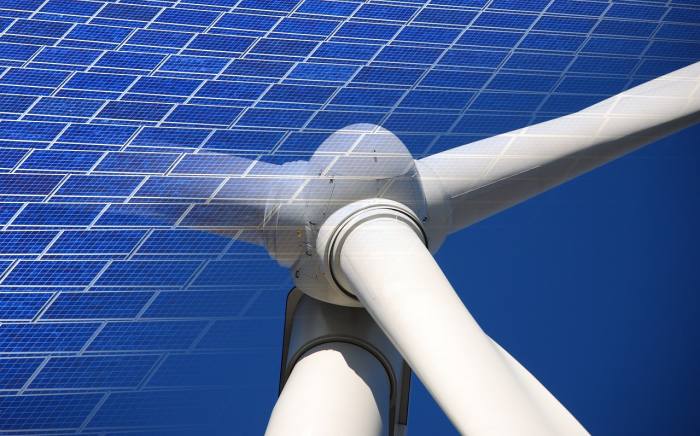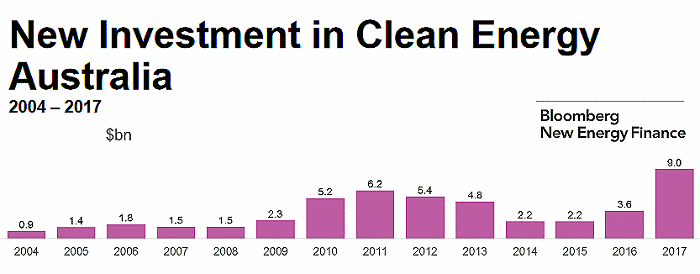
Image: Seagul
Australia was a star performer in renewable energy investment last year says Bloomberg New Energy Finance (BNEF) – but it warns clouds may be gathering.
Clean energy racked up USD $333.5 billion in investment around the world in 2017, up 3% from 2016 and the second highest annual figure ever states BNEF. Cumulative investment since 2010 has reached a whopping USD $2.5 trillion.
While solar power has seen substantial cost reductions, the amount invested globally last year was up 18% on 2016, reaching $160.8 billion – with over half of that figure spent in China. BNEF estimates 53GW of PV capacity was installed in China last year – up from 30GW in 2016.
China may have stolen the limelight in 2017, but Australia was certainly punching above its weight in the global ring and setting a new national record.
“Large wind and solar project financings pushed Australia up 150% to a record USD $9 billion1,” states BNEF. Investments in 4.2GW of large scale projects were committed last year and around a gigawatt of rooftop solar power installed.
A Potentially NEGative Situation
As others have previously warned, BNEF has flagged the road ahead for renewables may not be so bright and breezy.
“After 2020 when the current renewable energy target is met, investment under federal policies would likely fall off a cliff, because the national energy guarantee, as currently floated by the Federal Government, would require very little effort to achieve,” said BNEF’s Australian head Kobad Bhavnagri in an interview with ABC’s RN Breakfast.
The Climate Council has seized on the comments.
“As 2018 gets underway, credible and serious Federal climate and energy policy is crucial to encourage investment in renewables and slash our rising pollution levels,” said Climate Council CEO Amanda McKenzie.
“Unfortunately the proposed National Energy Guarantee could do exactly the opposite, with studies showing negligible renewable energy growth under the scheme.”
The NEG may never get across the line. In late November last year, South Australian Energy Minister Tom Koutsantonis pointed out it will require unanimous support at COAG. Given hostility towards it from some corners (including SA), Minister Koutsantonis believes the “policy is either years away, or won’t happen at all.”
Economic modelling from Ernst and Young in November suggested 20,000 potential jobs could be forfeited under the NEG and Doctors for the Environment Australia stated it would encourage continued burning of fossil fuels.
Perhaps that’s what Alinta Energy is quite literally banking on when making recent claims that its newly acquired asset, the brown-coal fired Loy Yang B power station in Victoria, will be viable for another three decades 2.
The time spent in bickering over the NEG could also leave a void, but the wind and solar juggernaut may still rumble on and push out more coal, driven by state-based targets and continuing decreases in the cost of large-scale renewables-based electricity.
What About Home And Small-Scale Commercial Solar?
As for small-scale renewables support, such as the “rebate” for installing solar panels, hopefully the scheme isn’t further tinkered with in a way that could negatively impact it. This apparently can be done at the Energy Minister’s discretion without requiring legislative changes.
The out-of-pocket cost of going solar is still decreasing even though Australia’s major subsidy is already being gradually phased out, thanks in part to a rebound in STC prices (on which the subsidy is calculated), which vary according to market conditions.
In late December, we reported the Clean Energy Regulator expects the small-scale technology percentage to increase in 2018, boosting STC demand – but stresses this is not guaranteed. The decision on the percentage will be made by Minister for the Environment and Energy Josh Frydenberg by the end of March.
Footnotes
- ~AUD $11.3 billion at current exchange rates ↩
- Side note – Loy Yang B’s Unit 1 generator reportedly failed yesterday afternoon, during a period it was needed most. ↩


 RSS - Posts
RSS - Posts



Speak Your Mind